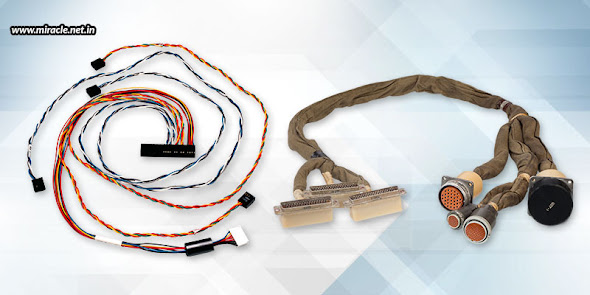Wire looms, wire harnesses, and cable assemblies are all phrases that are frequently used interchangeably. However, they actually differ greatly, and it is because of these distinctions that their respective uses are determined. While it is true that all three share the ability to transmit data or electronic power between two points, as you will see below, each option has certain features and advantages of its own.
Why choose these options?
Cable assemblies, wire harnesses, and wire looms are all phrases that are used to refer to a grouping of various cables or wires that are connected or bonded together into a single unit. The advantage of this design is that each wire or cable can be created to precisely the appropriate length and size, and they are all grouped together in a precise fashion to avoid wasting space or adding more wiring and to make installation quicker and simpler.
Manufacturers who need to make hundreds or thousands of similar pieces of equipment frequently employ such assemblies. As a result of the constant vibration created by the automotive sector, single wires and cables were initially made popular in the 1920s and 1930s. The wires were more protected and secured, according to the engineers, when they were tied together. Today, the majority of equipment uses a harness, assembly, or loom to organize its internal wiring.
Wire harness
These wiring systems are the most basic. A wiring harness is used to organize numerous wires as per a predetermined arrangement. A wire harness is simply a wrapper or sheath that keeps numerous wires or cables in place neatly, which is typically constructed of thermoset or thermoplastic material. To conserve space and shield them from harm while in operation, many wires of the necessary length are tied together. They might or might not have one or more connectors to terminate them. A more complicated harness might include wires running in several different directions and have a wide variety of termination components. Simple and complex harnesses both use materials like heat shrink, cable ties, or electrical tape to bind the wires together. These harnesses can typically be constructed relatively simply, which allows for speedy production at an affordable price.
The main purpose of a wire harness is to retain the cables and wires in the predetermined arrangement, minimizing movement and maximizing the use of available space while relying on the cable or wires' own sheath for protection. As a result, wire harnesses are typically a low-cost alternative. A wiring harness has the advantages of keeping the wires neatly in place, making them visible for easy fault tracing, and strengthening the assembly by binding the wires.
When the same wiring arrangement is used repeatedly, like during the mass production of items, this kind of wiring system is especially useful. The automotive industry popularized wire harnesses in the 1920s and 1930s to solve the issue of individual wires coming undone and getting damaged from the vibration of the car.
Cable assembly
A cable assembly is comparable to a wire harness, but its protective wrapping is more robust, and can be composed of vinyl, thermoplastic rubber, or shrink-wrapped thermoplastics. When exposure to environmental elements is a design consideration, a cable assembly is utilized to hold the wires or cables in place as well as to provide further protection against heat, abrasion, friction, and moisture. Individual wires and multicore cables can both be used in a cable assembly's design. The benefits of the protective wrapping against the weather are the main justification for choosing a cable assembly over a wiring harness, even if it is more expensive and loses the ability to physically trace the individual wires.
Wire loom
Wire looms are fundamentally more complicated than assemblies and harnesses, as they combine various cables and wire kinds into various groupings, frequently employing a variety of binding techniques. Wiring looms can range from being simple, integrating only a few wires, to being a complicated network of cabling, as those used in contemporary automobiles and aircraft. By lowering the wiring footprint of a product, wire looms offer space-saving as well as cost-saving designs by reducing material waste. Additionally, wire looms enable partial or full drop-in solutions for applications such as those in automobiles, aviation, and home appliances. This can significantly shorten installation timeframes and lower overall expenses.
Whatever you choose for your applications, Miracle Electronics offers subcontractors and final product manufacturers unique wire harnesses, cable assemblies, and wire looms for a variety of industries. The skilled staff at Miracle, a flexible harness, assembly, and looms manufacturer in India, can collaborate with your product design team to create custom products that are made exactly to your specifications.
For more information, visit: https://www.miracle.net.in/

No comments:
Post a Comment